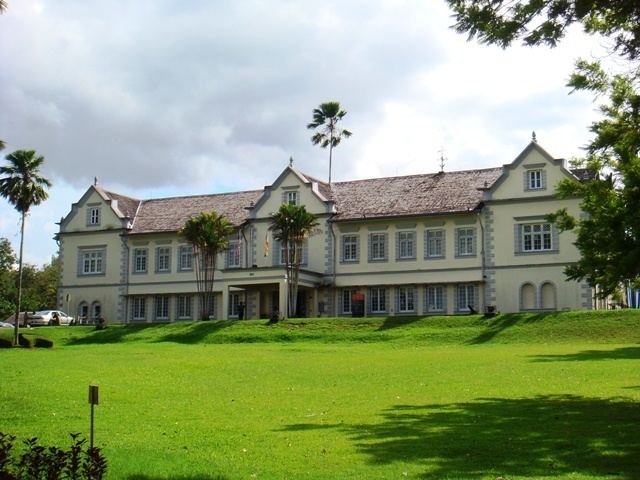Established 1888 | Phone +60 82-244 249 | |
 | ||
Website www.museum.sarawak.gov.my Hours Open today · 9AM–4:45PMThursday9AM–4:45PMFriday9AM–4:45PMSaturday10AM–4PMSunday10AM–4PMMonday9AM–4:45PMTuesday9AM–4:45PMWednesday9AM–4:45PMSuggest an edit Similar Kuching Cat Museum, Semenggoh Nature Reserve, Fort Margherita, Sarawak Cultural Village, The Astana - Sarawak | ||
Sarawak museum kuching
The Sarawak State Museum (Malay: Muzium Negeri Sarawak) is the oldest museum in Borneo. It was founded in 1888 and opened in 1891 in a purpose-built building in Kuching, Sarawak. Naturalist Alfred Russel Wallace encouraged Charles Brooke, the second White Rajah of Sarawak, to establish the museum.
Contents
- Sarawak museum kuching
- Xsoul crew flash mob at sarawak state museum part 1
- History
- Architecture
- Layout
- Activities
- Museum journal
- Curators and directors
- Literature
- References
Xsoul crew flash mob at sarawak state museum part 1
History
The Sarawak Museum was built in 1891 and was extended to its present form in 1911. The building was built to permanently house and display local indigenous arts and crafts, and collections of local animals. Its founding was encouraged by the prominent British naturalist, Alfred Russel Wallace, who was then collecting specimens in the state.
The museum was run by military officers during the two world wars. In the Great War, British officers were assigned to it. During the Japanese Occupation of World War II, the museum was directed by a Japanese officer, who was sympathetic to its goals. He protected it and the museum suffered very little damage or looting.
The historic building has been renovated. It is used to exhibit and interpret collections on the natural history of Sarawak. Shell Oil sponsored an exhibit on the petroleum industry, which has been important to Borneo. In addition, it displays archaeological artefacts and reconstructions of examples of traditional life of the indigenous peoples, and of their arts and crafts. It has the most comprehensive archaeological, natural history, and ethnographic collections on Borneo.
Architecture
The building has undergone several renovations and alterations since its construction. It is rectangular, 44’ × 160’ with walls and pillars of bricks, and roof of belian and concrete. The Sarawak Gazette referred to it being in the Queen Anne style. It is likely that Rajah Charles saw a picture of the Adelaide Children's Hospital and directed his staff to produce a Museum to look like it. The museum is very similar but without the central spire. The galleries are lighted by dormer windows on the roof, making wall space available for exhibit displays and collections.
Layout
The ground floor of the museum holds the natural history collection and specimens of Sarawak fauna — reptiles, mammals, birds, etc., all expertly prepared and mounted for display. The west wing of the museum houses the Shell exhibition on the petroleum industries of Sarawak.
The first floor has exhibits of ethnographic artefacts of the indigenous peoples, such as models of the various types of longhouses, musical instruments, various kinds of fish and animal traps, handicrafts, models of boats and others.
Activities
The museum has been proclaimed guardian of the national patrimony, with the responsibility to search for, acquire and protect antiquities and historical monuments. The museum director is also responsible for protecting marine turtles and assisting the chief game warden in the conservation of wildlife.
Museum journal
The Sarawak Museum Journal is published by the museum staff. It was first published in 1911, with John Moulton the inaugural editor, making it one of the oldest scientific journals of the South-East Asian region. Topics covered include the history, natural history and ethnology of the island of Borneo.
Curators and directors
Until 1974, the head of the museum was termed "Curator":
After this, "Director" was the title for the head of the museum:
